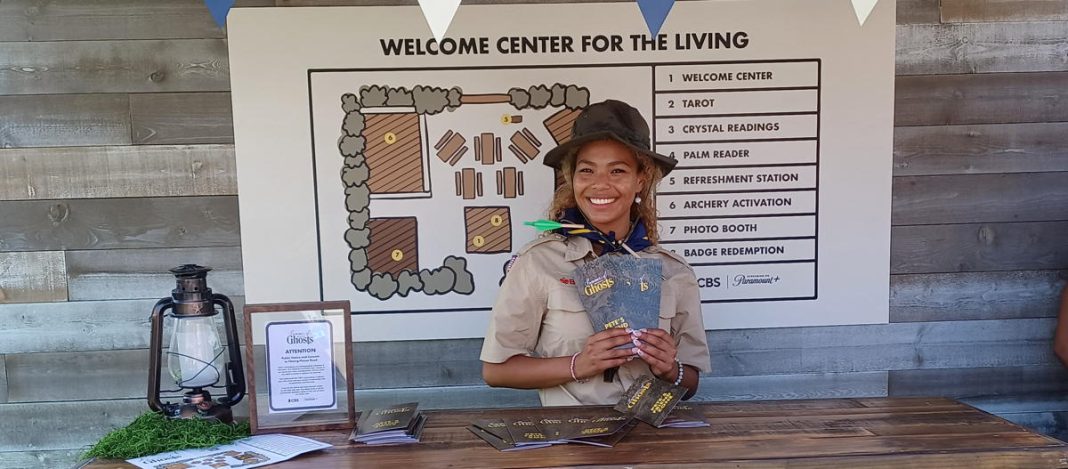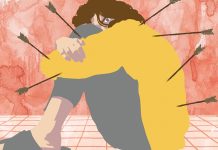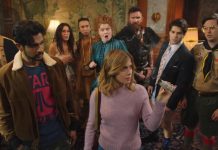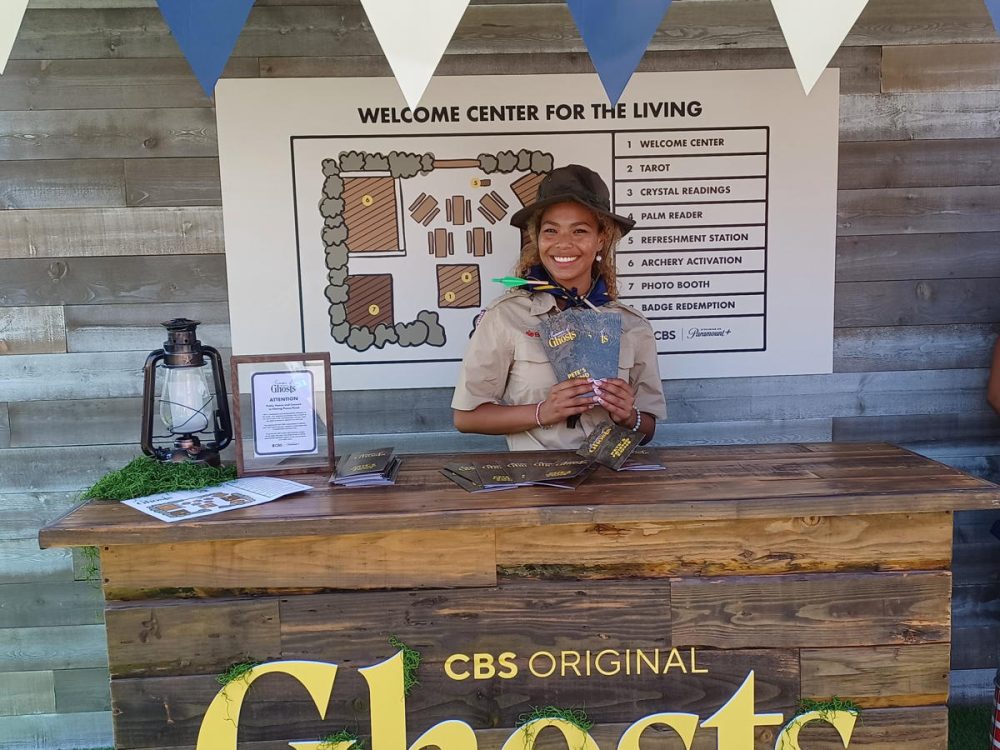
By Kelas Lloyd
One thing I was not expecting to hear as I asked my questions about SDCC ’22 accessibility at activations was one of the workers at the Ghosts activation acknowledging the builds needed to be accessible in the first place. While technically this is true, anything built for the public is required to be accessible, often it’s not actually true when it comes to activations and other activities at San Diego Comic Con.
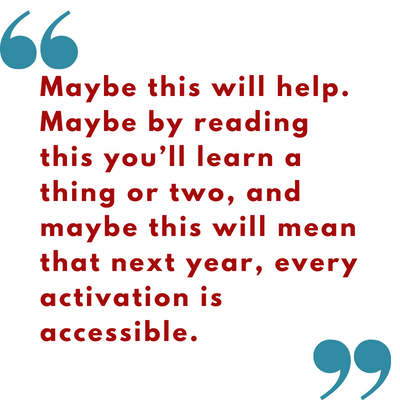
Let’s start with the example of the activation that just didn’t bother to try – this year’s Gray Man activation, put on by Netflix. First there were the obvious SDCC ’22 accessibility issues – a step up into the train, a step down, and then multiple steps up to an area you’re supposed to dash across before a staircase down – that could be spotted by anyone. But then there were further issues. If you are blind or vision-impaired, there’s nothing from this activation for you either. You wouldn’t see the boxes holding the knob that have lights that signal if you’ve activated them correctly. The design of the second car guiding you to the doors would have done nothing. And what’s exciting about a dash across a short area where you can’t see the quiet sparks, fog, or camera? A lot of action-based activations do not bother to take physical disability into consideration, and it shows.
Much better on the accessibility front was the Severance activation, from Apple TV. It had an elevator entrance to the rear… if you asked about it. There was no ADA standby line, though, only a single standby line so if you had physical issues with waiting and didn’t manage to snag a reservation, you were out of luck there. Once inside, though, the experience was very accessible. The hallways they built were wide enough for a wheelchair, there weren’t excessive flashing lights. If you were blind or low-vision you could still get most of the experience except the actual office workstation, and those were limited anyway with four people being able to use the stations out of the ten in each group. If you’re D/deaf or Hard of Hearing you would have needed an interpreter, but even walking through the setting itself was fun and you could still use the workstations.
This is the challenge of SDCC. One in four Americans (26%) and about one in six people worldwide (15%) are disabled. We have the same interests as anyone else, we often have some sources of income and want to be entertained, but many portions of San Diego Comic Con shut us out.
The convention does what it can. The ADA booth near Hall A is equipped to answer questions, rent out wheelchairs and scooters, and give out stickers. There are alternative waiting areas for disabled people where you’re allowed to sit down, people who will wait in line for you where that’s not an option, and even return times at some booths (like Blizzard.) The convention offers sign language interpretation as well, though don’t always count on them showing up on time (as we saw at the Disability Inclusion panel hosted by the Inevitable Foundation.) I heard someone at the Talk Back panel speak about how security helped give her child a bubble when they were inches away from a meltdown, saving the day. There is disability support there, and I believe SDCC itself does a good job. The activations are where it often falls apart, aside from the Hall H wristband debacles, which we’ll get to.
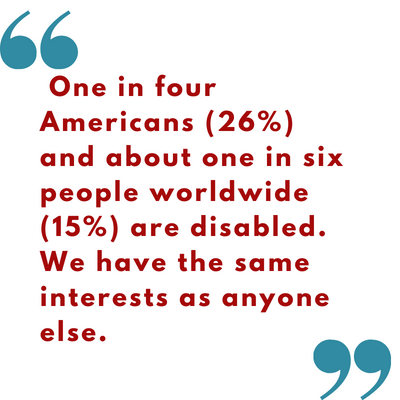
A close runner-up for SDCC ’22 accessibility was the D&D tavern, promoting the movie coming from Paramount Pictures. It had a separate ADA line, and a whole section with a semi-decent view of the special effects that required no steps up or down. The ‘secret’ area was still past some steps, though, and we do have to talk about masks when it comes to accessibility. The disabled are far more vulnerable to Covid-19 than many populations, and this place could not have been well-enough ventilated to make up for the fact that it’s indoors, entirely enclosed, and the one main activity was drinking, followed by a loud yelled chant. Masks were not expected because everyone was drinking, but there should have been some consideration about the ventilation of the area.
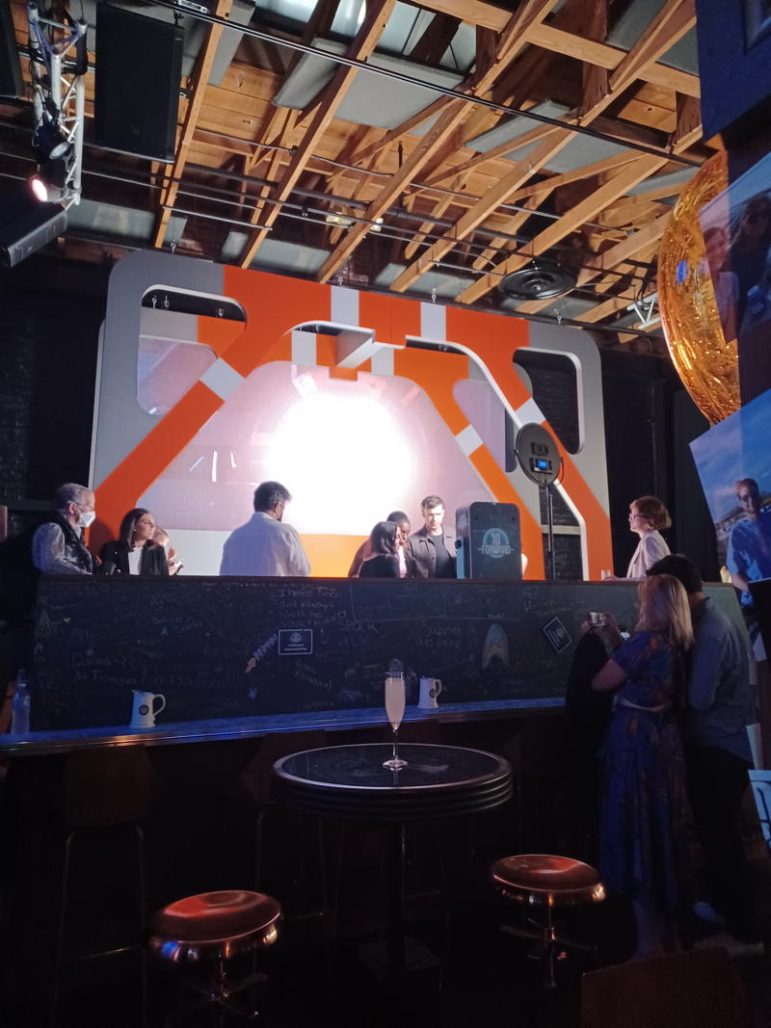
Also notable from Paramount was the 10-Forward experience. You could buy a ticket for $60 and wind up indoors, which was heavily inaccessible. The seating was extremely limited, and what was there for general ticket holders was extremely high up so you’re not getting the use of a table if you’re in a wheelchair, there was again no consideration for ventilation at a place that’s based around eating and drinking, and finally the activity (a video where you were beaming somewhere) was up three steps and then up onto another platform. To get the included-with-entry two drinks you’d have to deal with your normal-height bar, which is an obstacle to begin with, and then add to that a whole lot of people all pushing to get their drinks at once. For a show that’s about Infinite Diversity in Infinite Combinations, 10-Forward should have been a lot better. The outside space was free, with standby waiting, but again the tables were limited and tall and the fake grass was the too-soft type that’s incredibly difficult for a wheelchair or ECV. On paper, this was all technically accessible because anyone could get in. In practice, you were shut out of significant parts of the experience inside and would struggle to get around once in the outside section.
There were several activations I did not get to, but I’ve asked a lot of directed questions about them and can give a basic rundown on where I think they did well and where they did not.
The House of the Dragons, from HBO, had a return time for disabled people, which is one of the best options out there. It means we’re not skipping the line, we’re still waiting, but we’re doing it on terms we can manage which is usually ‘find nearby seating and wait there.’ It serves the physically disabled as well as those on the autistic spectrum who struggle with lines. Once in the cast was happy to help people get around and assist with making sure they got pictures, but there were two big downfalls with this activation. First, there was no masking requirement. Thursday morning there were already reports of HotD cast testing positive for Covid, which means that every single person who went through there was exposed, and it was an indoor experience. I would not be surprised if HoTD was one of the Hot spots for Covid spread at the convention, and again, disabled people are particularly at risk for Covid not just because of comorbidities, but also because of how health care professionals treat us. This activation was high-risk. Secondly, HotD was almost entirely visual-based. You looked at things. You activated a mobile app. You did get to touch dragon eggs and you could sit on the Iron Throne, but if you were blind or vision-impaired there were no descriptions of what was going on. You would miss out on a vast majority of the experience.
The FX activation was on one surface, which would suggest it was accessible, but it was on grass which made navigation by wheelchair or ECV tricky. I’ve heard the least about this activation, though the end reward seems to have been purely visual – a recorded 360 video on the What We Do In The Shadows promo dance floor. Most can get in, but what do they get out of it? What makes it worth the wait if you’re visually impaired, and what makes it worth the challenge if you’re mobility impaired?
And finally, of the big activations this year, last but definitely not least is Abbott Elementary, from ABC. I do not know if it had any accessible options for the line, but by all accounts the activation itself was not just accessible, but had something for everyone. The floors weren’t soft, the rewards were physical, the actors interacted with you, and there was fanart on the walls from an online contest. I couldn’t include Abbott Elementary in the main section because I didn’t experience it myself and can’t give a first-hand account, but if what I’m hearing is right, then it was CBS and ABC that did better than all of the ‘premium’ streaming companies out there when it came to providing accessible content for their fans.
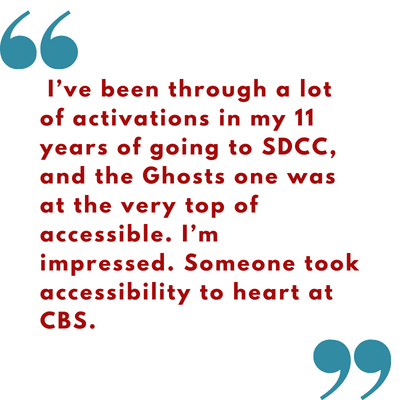
I do believe that SDCC and most activations make an effort. But these things are designed by abled people who don’t always know what full accessibility is, or how to make sure they’re not excluding people. I don’t know how the 10-forward transporter being up some steps got approved, and I really don’t know how the absolutely inaccessible Gray Man setup was deemed acceptable, but the majority of places made an effort.
I hope this coverage inspired some thought about some of what needs to be considered for next year’s builds. We deserve to be taken fully into consideration, and in fact as these things are open to the public it’s expected and required of you. CBS knew this. The ball is in your court, everyone else.


